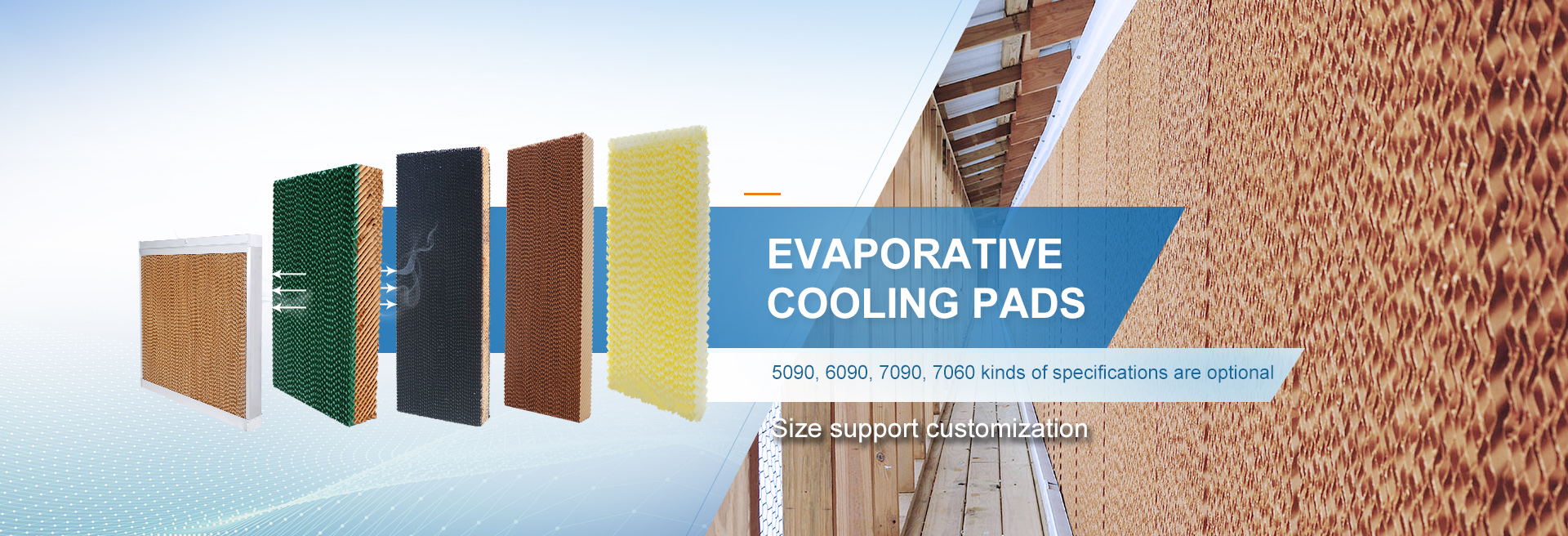Green mud moss is a common algae in the cooling pad water system. For its formation, please see the following:
Algae are unicellular, the most primitive material, and can be called the homobiotic of water. Moss is formed by algae accumulation, commonly known as green mud moss, which is prevalent in the cooling pad water system. The green mud moss in the cooling pad water system mainly occurs in spring, summer and autumn. Tap water is used as the water source of the water system, and the green mud moss is produced later than the groundwater water system. The use of surface water as a water system is most conducive to the multiplication of green mud moss. From this, we can clearly recognize that there are four major factors for the production of green mud algae, water, air, nutrient elements and suitable temperature.
Tap water contains a small amount of chlorine, also known as bleaching powder. Chlorine can effectively clean water and prevent algae from multiplying. Groundwater does not contain chlorine, and is slightly more likely to produce blue mud algae than tap water. The surface water itself contains a certain amount of single-celled algae, which gather and multiply rapidly with air, sunlight, and nutrient components in the water in the cooling pad water system to form green mud algae.
It is difficult to avoid the formation of moss in the cooling pad water system. How to correctly prevent and control the moss in the cooling system and prolong the service life of the cooling pad is a relatively cumbersome task.
Prevention and control the moss:
The prevention and treatment of moss in the cooling pad water system must be considered from the early stage of the design of the central pool. The water supply system of the central pool should consider tap water as much as possible. A 100-mesh filter is set between the return water and the outlet water. And set the time dosing process. Timing dosing process can be divided into two categories: ①Manual dosing (mainly refers to solids); ②Automatic drip system (mainly refers to liquids). The solid type mainly refers to bleaching powder and copper sulfate; the liquid type mainly refers to moss net, iodophor, etc.
Suggestion: Stir the water with 50 grams of bleaching powder or 25 grams of copper sulfate per cubic meter in the initial pool to make it uniform, turn on the water pump after standing still for several hours, and then add the above-mentioned anti-algae materials twice a day, but it should be noted that copper sulfate will be in the water system. A small amount of toxicity is produced, and animals cannot be allowed to touch the cooling pad and water source to avoid other problems. The above method has a certain effect on the anti-algae of the cooling pad, and the efficiency is about 80%. However, because there is a certain amount of chlorine in its raw materials, the water system may have a little odor, which will affect the resin components in the cooling pad forming process during long-term use. The appeal operation process must be dedicated to the responsibility of the use of protective materials. Moss net, iodophor, p-hydroxy (qiang) benzoic acid, and tetraalkylammonium complexed iodine are all liquid anti-algae agents. In theory, online dosing can be realized. The online dosing system can realize unattended, dosing volume It can also be adjusted timely, and the total effective rate can reach 90%. The above-mentioned anti-algae agent has little side effects on the water body, and has little effect on the resin components in the cooling pad forming process, but it does not directly contact with animals. In addition to the good anti-algae effect, the above anti-algae agents also have high efficiency and wide coverage and good killing effect on fungi, bacteria and molluscs, and have little pollution on public water bodies. The common fishy smell in the cooling pad ventilation system also has a certain inhibition effect. It also has some effect on removing the moss on the cooling pad. In short, in order to make the cooling pad ventilation system play a more efficient role in the production of agricultural and sideline products, it is necessary to give priority to algae prevention, supplemented by algae removal, and combine prevention and control to make the service life of the cooling pad more reasonable.










